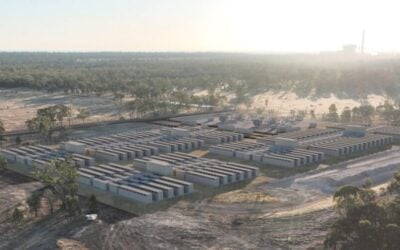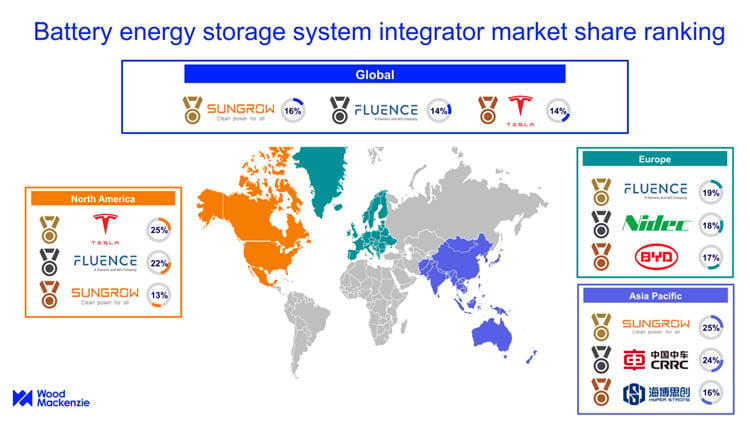Report on Energy Poverty in Africa and its Implications for Sustainable Development Goals
The State of Energy Access and its Conflict with SDG 7
A significant development crisis persists in Africa, where an estimated 600 million people lack access to electricity. This situation places the continent in direct opposition to the objectives of Sustainable Development Goal 7 (SDG 7), which aims to ensure affordable, reliable, sustainable, and modern energy for all. Even for households with a connection to the grid, the supply is often erratic, leading to hidden costs and undermining progress towards energy security.
- Over 600 million Africans are without electricity access.
- Those with grid connections frequently supplement unreliable power with costly alternatives.
- The continent’s energy deficit is a primary obstacle to achieving multiple SDGs.
Redefining Energy Poverty to Align with SDG 1: No Poverty
Current metrics for measuring energy poverty are insufficient, failing to capture the full economic burden on households. This oversight hinders effective policy-making aimed at achieving SDG 1 (No Poverty).
Inadequate Measurement Frameworks
A report by the Clean Air Task Force (CATF) highlights that traditional assessments do not account for expenditures on “defensive strategies” required to cope with unreliable power. These strategies include:
- Backup generators
- Torches and candles
- Paraffin lamps
- Voltage stabilisers
A New Definition for Accurate Assessment
CATF proposes a more comprehensive definition of energy poverty: a household that spends more than 10% of its income on all electricity services, including these defensive costs. A case study in Benin revealed that applying this metric increases the estimated rate of energy poverty from 51% to 72%, demonstrating a deeper financial strain on populations and a greater challenge to alleviating poverty under SDG 1.
Systemic Failures Hindering SDG 9 and SDG 10
Infrastructure and Governance Deficiencies
The continent’s energy crisis is rooted in systemic failures that directly impact SDG 9 (Industry, Innovation, and Infrastructure) and SDG 16 (Peace, Justice, and Strong Institutions).
- Infrastructure Losses: Energy transmission and distribution losses in 36 African countries range from 11% to 48%, among the highest globally, due to faulty and aging infrastructure.
- Dysfunctional Assets: Legacy energy assets, such as South Africa’s coal plants and Nigeria’s outdated grid, are failing to meet demand.
- Governance Issues: Research indicates that energy poverty is strongly linked to governance challenges like corruption and poor implementation, which must be addressed to build the strong institutions required by SDG 16.
The Urban-Rural Divide and SDG 10: Reduced Inequalities
Significant disparities in energy access exacerbate inequality, a core concern of SDG 10. Data from Afrobarometer shows that 65% of urban residents have reliable access, compared to only 24% in rural areas. This gap perpetuates economic and social inequalities between communities.
Pathways to Achieving Sustainable Energy Goals
Leveraging Renewable Resources for SDG 7 and SDG 13
Africa possesses immense potential for renewable energy, which is critical for achieving SDG 7 (Affordable and Clean Energy) and SDG 13 (Climate Action). Despite holding 60% of the world’s prime solar resources, the continent has only installed 1% of global solar capacity. Tapping into this potential through technologies like mini-grids and off-grid solutions can accelerate the transition to clean energy.
Strategic Recommendations for Progress
To create more equitable energy access and advance the SDGs, a multi-faceted approach is required:
- Adopt a Broader Definition of Energy Poverty: Policymakers and donors must use more accurate metrics to target support effectively towards those most in need.
- Invest in Infrastructure and Maintenance: Upgrading grids and supporting low-cost, reliable backup systems is essential for building the resilient infrastructure envisioned in SDG 9.
- Strengthen Governance: Tackling corruption and improving policy implementation is fundamental to overcoming systemic barriers.
- Promote a Just Energy Transition: An “energy mix” that combines renewable energy growth with a managed transition away from fossil fuels can support economic stability and protect livelihoods, contributing to SDG 8 (Decent Work and Economic Growth).
As Africa’s population is projected to double, ensuring universal access to reliable and sustainable energy is a prerequisite for advancing development across all sectors, including healthcare (SDG 3), education (SDG 4), and employment (SDG 8).
Analysis of Sustainable Development Goals in the Article
1. Which SDGs are addressed or connected to the issues highlighted in the article?
The article on energy poverty in Africa addresses several interconnected Sustainable Development Goals (SDGs). The analysis reveals connections to the following goals:
- SDG 7: Affordable and Clean Energy: This is the most central SDG, as the entire article revolves around the lack of access to reliable and affordable electricity, the need for renewable energy sources, and the transition to clean energy.
- SDG 1: No Poverty: The article directly links energy access to economic well-being by introducing the concept of “energy poverty,” where households spend a significant portion of their income on electricity and backup solutions, causing “financial strain.”
- SDG 9: Industry, Innovation, and Infrastructure: The text highlights issues with “faulty infrastructure,” “ageing coal plants,” and an “outdated power grid,” pointing to the need for resilient and sustainable infrastructure development.
- SDG 10: Reduced Inequalities: The article points out the significant disparity in energy and related service access between urban and rural populations, a key aspect of inequality.
- SDG 13: Climate Action: The discussion on transitioning “away from fossil fuels,” leveraging Africa’s vast solar resources, and the potential to become “100% renewable” by 2050 directly relates to climate change mitigation efforts.
- SDG 16: Peace, Justice and Strong Institutions: The article identifies “governance issues such as corruption and poor implementation” as a primary barrier to solving energy poverty, highlighting the need for effective and transparent institutions.
2. What specific targets under those SDGs can be identified based on the article’s content?
Based on the issues discussed, the following specific SDG targets can be identified:
-
Target 7.1: By 2030, ensure universal access to affordable, reliable and modern energy services.
- Explanation: The article’s core theme is the struggle of “600 million people” in Africa to “access reliable energy.” It emphasizes the problem of “erratic supply” and the need for “stable and affordable access to electricity,” which directly aligns with this target.
-
Target 7.2: By 2030, increase substantially the share of renewable energy in the global energy mix.
- Explanation: The article points out that Africa has “60% of the world’s best solar resources, but only around 1% of installed solar capacity.” It discusses the potential for a “transitioning to clean energy by 2050 using off-grid renewables,” which supports this target.
-
Target 1.2: By 2030, reduce at least by half the proportion of men, women and children of all ages living in poverty in all its dimensions according to national definitions.
- Explanation: The article proposes a new way to measure a dimension of poverty, defining “energy poverty” as a household spending “more than 10% of its income on electricity services.” It shows how this financial burden, including costs for “defensive strategies,” pushes more people into poverty, as seen in the Benin case study where poverty estimates jump from 51% to 72%.
-
Target 9.1: Develop quality, reliable, sustainable and resilient infrastructure… to support economic development and human well-being, with a focus on affordable and equitable access for all.
- Explanation: The article describes Africa’s energy infrastructure as suffering from “faulty infrastructure,” “ageing coal plants,” and “outdated power grids.” The call for “grid upgrades” and maintenance to solve “energy transmission and distribution losses” directly addresses the need for reliable and resilient infrastructure. The rural-urban divide mentioned also highlights the need for “equitable access.”
-
Target 10.2: By 2030, empower and promote the social, economic and political inclusion of all, irrespective of age, sex, disability, race, ethnicity, origin, religion or economic or other status.
- Explanation: The article highlights a stark inequality by citing that “65% of people in urban areas had reliable internet access, compared to just 24% in rural locations.” Since reliable energy is a prerequisite for internet access, this statistic illustrates the exclusion of rural populations from modern services and opportunities, an issue this target aims to address.
-
Target 16.6: Develop effective, accountable and transparent institutions at all levels.
- Explanation: The article explicitly states that energy poverty is more linked to “governance issues such as corruption and poor implementation than technological, financial or policy issues.” This points to a failure of institutions to deliver essential services, making the development of effective and accountable governance systems a critical solution.
3. Are there any indicators mentioned or implied in the article that can be used to measure progress towards the identified targets?
The article mentions or implies several quantitative and qualitative indicators that can be used to measure progress:
-
Indicator for Target 7.1: Proportion of population with access to electricity.
- Evidence: The article provides a baseline figure: “more than 600 million Africans lack electricity.” Progress would be measured by the reduction of this number. The article also implicitly suggests a new indicator for reliability: the frequency and duration of blackouts and voltage fluctuations.
-
Indicator for Target 7.2: Renewable energy share in the total final energy consumption.
- Evidence: The article provides a clear indicator by stating Africa has “60% of the world’s best solar resources, but only around 1% of installed solar capacity.” An increase in the percentage of installed solar capacity would be a direct measure of progress.
-
Indicator for Target 1.2: Proportion of population living in poverty in a specific dimension (energy poverty).
- Evidence: The article proposes a specific metric: the percentage of households that spend “more than 10% of its income on electricity services.” It provides a data point for Benin, where “72% of households suffer from energy poverty” using this metric, which could be tracked over time.
-
Indicator for Target 9.1: Infrastructure quality and access.
- Evidence: The article mentions that in 36 African countries, “energy transmission and distribution losses” range from “11% to 48%.” A reduction in these loss percentages would indicate an improvement in infrastructure quality and efficiency. Furthermore, the gap between urban (65%) and rural (24%) access to services like the internet serves as an indicator of equitable infrastructure deployment.
-
Indicator for Target 16.6: Institutional effectiveness.
- Evidence: While not providing a number, the article qualitatively links energy poverty to “governance issues such as corruption and poor implementation.” Progress could be measured indirectly through established governance indicators like corruption perception indices or directly by tracking the successful implementation rates of energy projects.
4. Summary of SDGs, Targets, and Indicators
| SDGs | Targets | Indicators Identified in the Article |
|---|---|---|
| SDG 7: Affordable and Clean Energy | 7.1: Ensure universal access to affordable, reliable and modern energy services.
7.2: Increase substantially the share of renewable energy. |
– Number of people lacking electricity (currently “600 million”). – Percentage of installed solar capacity (currently “1% of installed solar capacity” despite having “60% of the world’s best solar resources”). |
| SDG 1: No Poverty | 1.2: Reduce poverty in all its dimensions. | – Proportion of households spending more than 10% of income on electricity (a proposed metric for energy poverty). – In Benin, this figure is 72% when including “defensive strategies.” |
| SDG 9: Industry, Innovation, and Infrastructure | 9.1: Develop quality, reliable, sustainable and resilient infrastructure. | – Percentage of energy transmission and distribution losses (currently “ranging from 11% to 48%” in 36 countries). – Disparity in service access between urban and rural areas. |
| SDG 10: Reduced Inequalities | 10.2: Promote the social and economic inclusion of all. | – The gap in reliable access between urban and rural populations (e.g., “65% of people in urban areas had reliable internet access, compared to just 24% in rural locations”). |
| SDG 13: Climate Action | 13.2: Integrate climate change measures into national policies. | – Progress towards the goal of transitioning to “clean energy by 2050.” – Shift from fossil fuels to renewables in the energy mix. |
| SDG 16: Peace, Justice and Strong Institutions | 16.6: Develop effective, accountable and transparent institutions. | – The prevalence of “governance issues such as corruption and poor implementation” as a primary cause of energy poverty. |
Source: context.news







